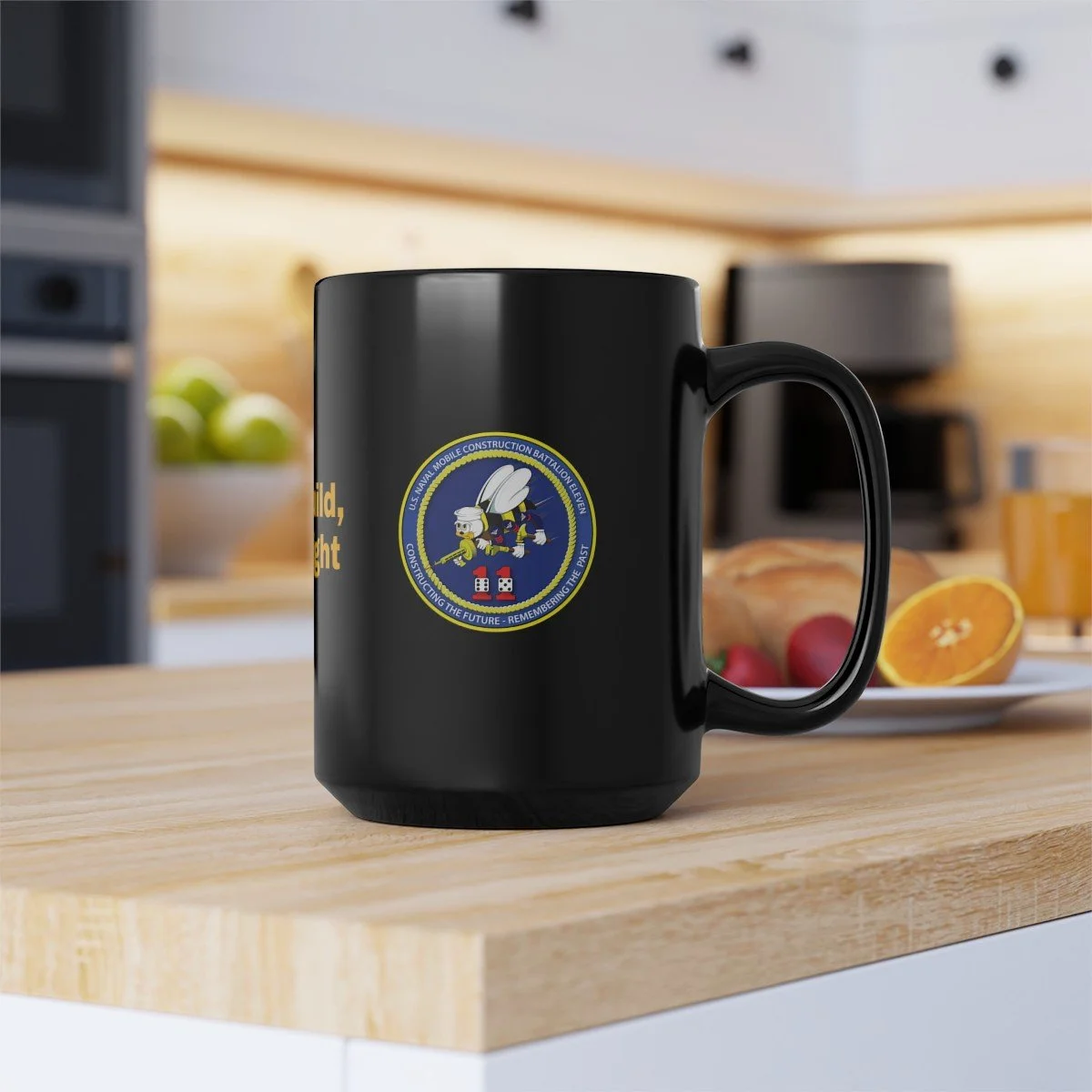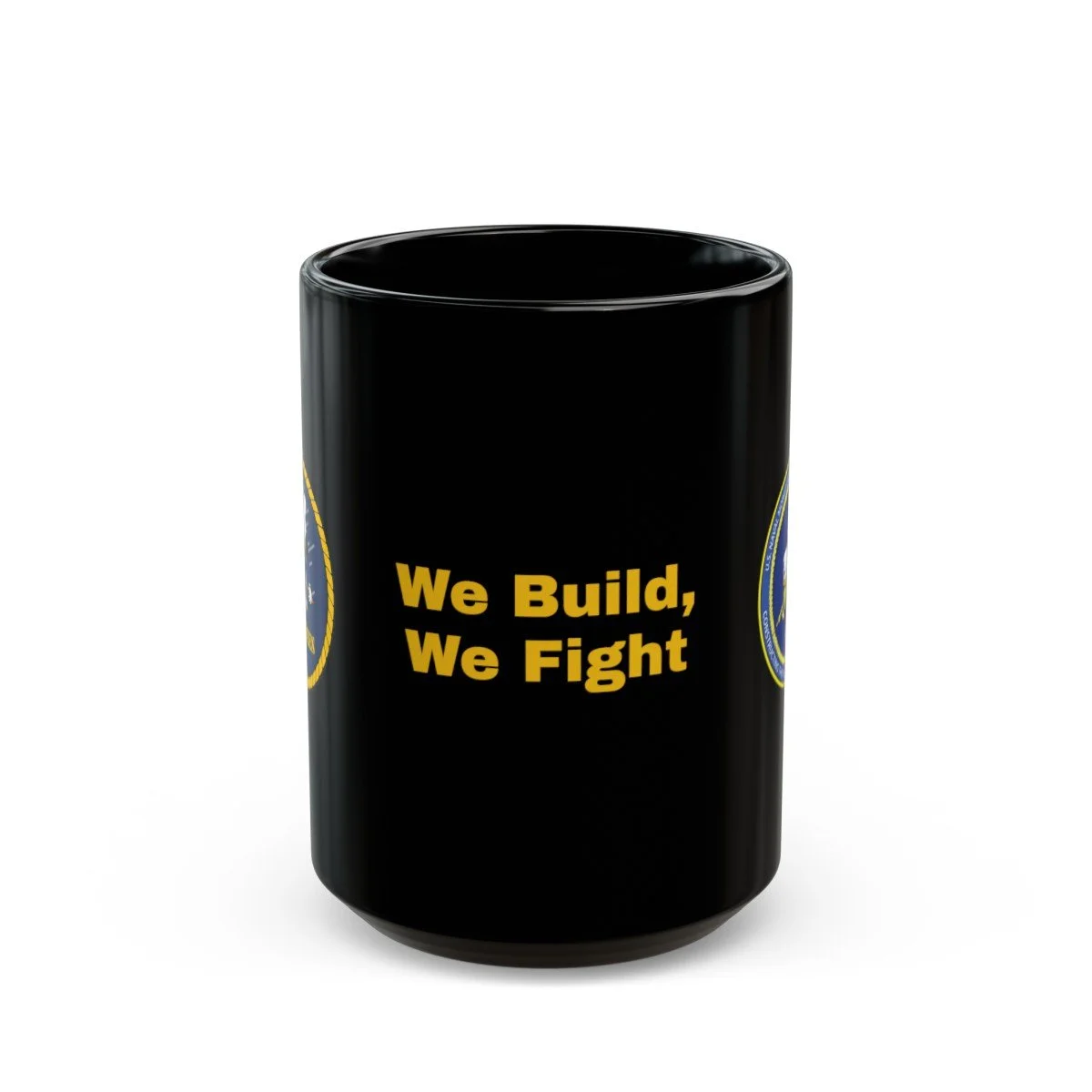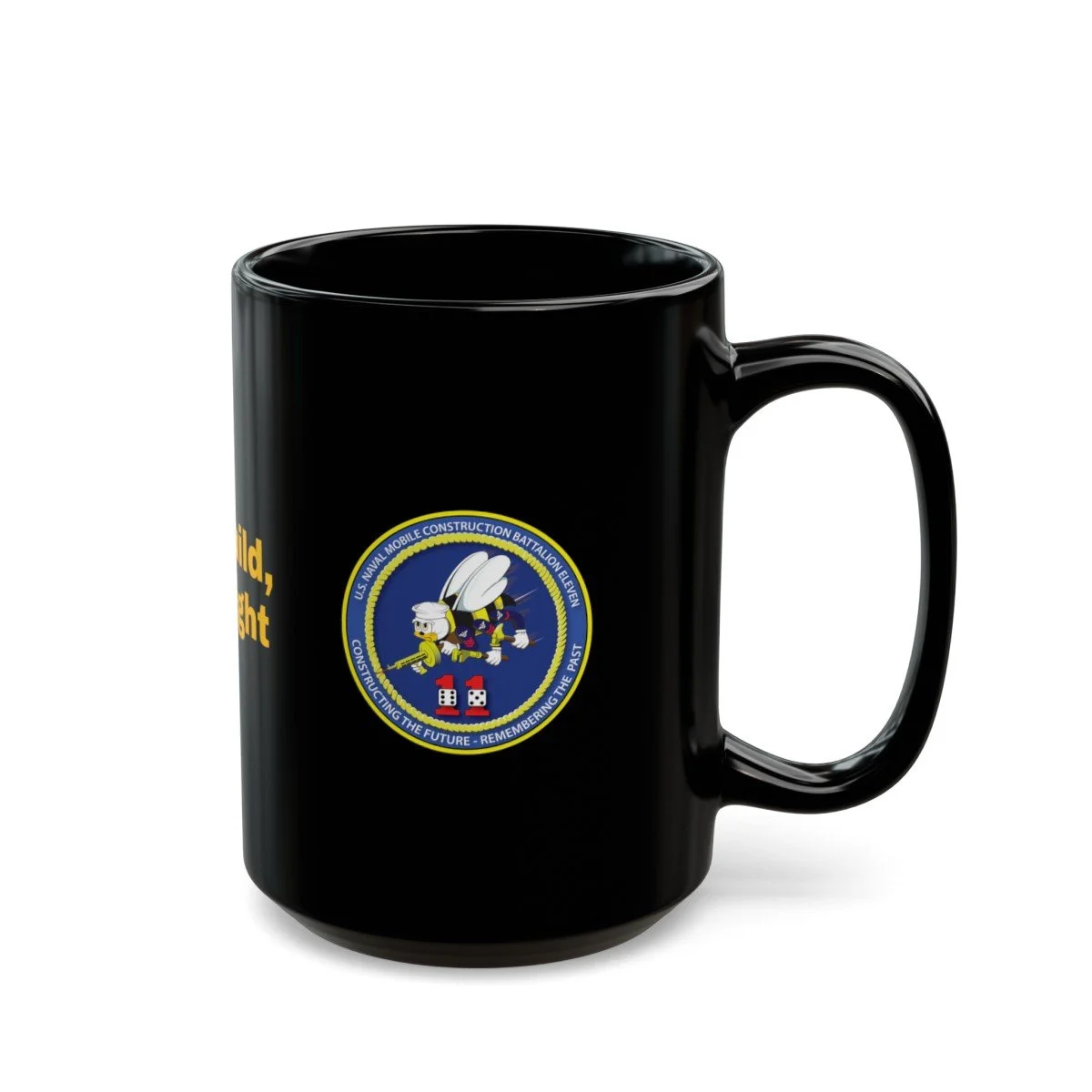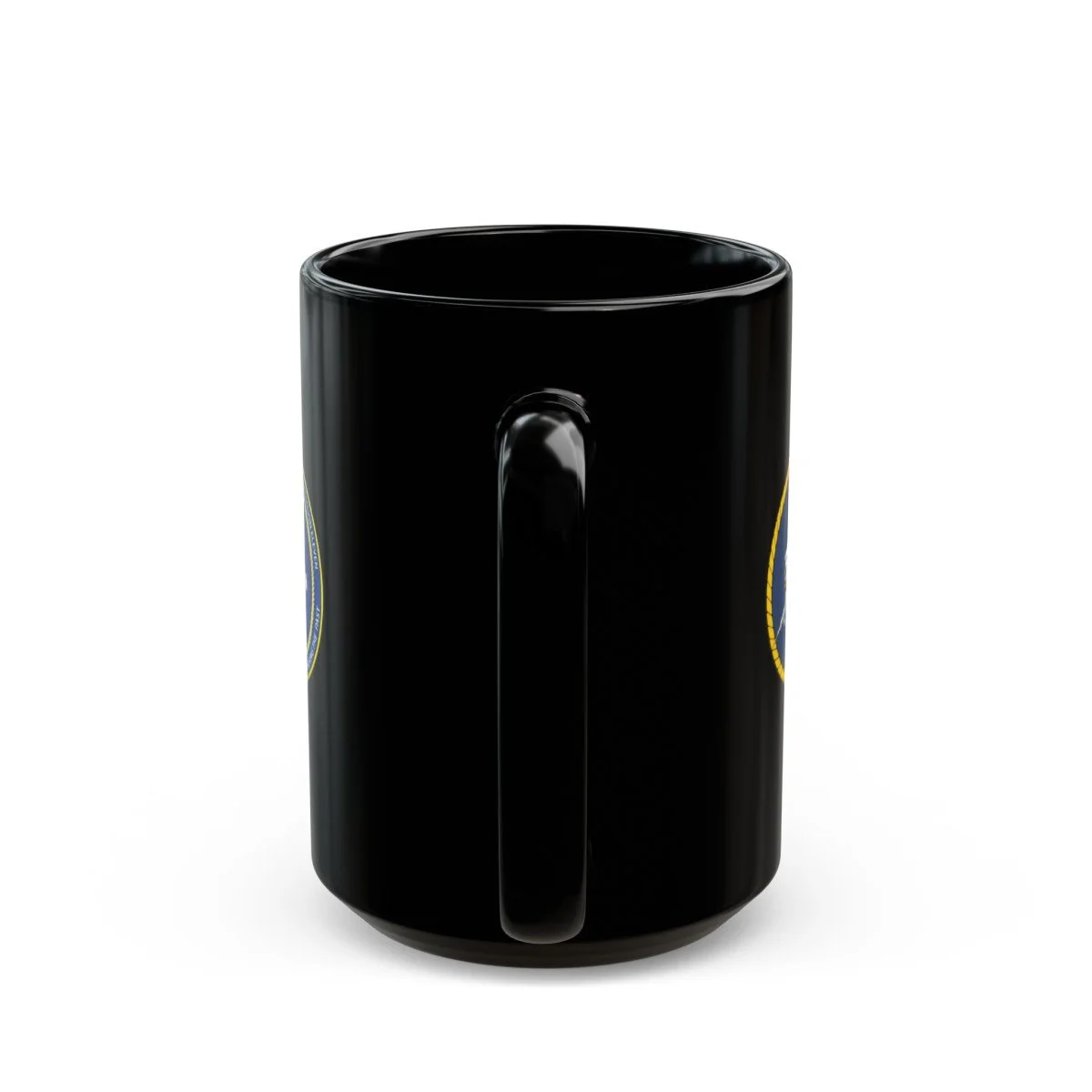 Image 1 of 6
Image 1 of 6

 Image 2 of 6
Image 2 of 6

 Image 3 of 6
Image 3 of 6

 Image 4 of 6
Image 4 of 6

 Image 5 of 6
Image 5 of 6

 Image 6 of 6
Image 6 of 6







Naval Mobile Construction Battalion Eleven (NMCB - 11) / Seabee Emblem / "We Fight, We Build" 15 oz Black Ceramic Coffee Mug
$10.00
Sip your coffee proudly from your NMCB-11 Seabee 15 oz Mug. It’s BPA and lead-free, microwave and dishwasher-safe, and made of black durable ceramic.
.: Material: 100% ceramic with a glossy finish
.: 15oz
.: C-shaped easy-grip handle
.: Microwave and dishwasher safe
.: Lead and BPA-free
NMCB-11 History
Naval Construction Battalion 11 (NCB 11), originally commissioned during World War II, undertook significant construction projects in the Pacific, including in Samoa, and was decommissioned after the war in December 1945. It was recommissioned in July 1953, during the Korean War's closing days, and embarked on major construction efforts such as the challenging removal of a mountain at Cubi Point in the Philippines, contributing significantly to expanding a 10,000-foot runway. NCB 11's prowess in construction and rapid deployment was further demonstrated through their response to the 1957 earthquake in Adak, Alaska, where they successfully repaired critical infrastructure within six months.
In the late 1950s and into the 1960s, NCB 11 continued to showcase its construction capabilities by building significant facilities for the U.S. Marine Corps in Okinawa. Their exemplary performance led to multiple Battle Efficiency Awards, underlining their operational excellence. During the Vietnam War, NCB 11 was distinguished by its bravery and construction expertise, notably through heroic actions by members like Construction Mechanic 3rd Class Marvin G. Shields, who posthumously received the Medal of Honor, marking him as the only Seabee recipient of this highest military decoration for valor.
Throughout the Vietnam War, NCB 11 undertook multiple deployments, constructing essential infrastructure under hazardous conditions, demonstrating exceptional combat engineering capabilities. Their work included road construction, bridge building, and the creation of numerous military facilities, significantly impacting U.S. military operations in the region. Despite facing adversities like typhoon damages and enemy attacks, NCB 11's Seabees demonstrated resilience and ingenuity, leaving behind a legacy of significant contributions to military construction and disaster recovery.
After their service in Vietnam, NCB 11 was decommissioned in December 1969, only to be recommissioned in September 2007 to meet the growing demands for Naval Construction Forces worldwide. As the first "SMART Battalion," NCB 11 has since been at the forefront of new initiatives and operational improvements, completing a highly successful deployment in 2009 by exceeding expectations across multiple areas of responsibility, including Africa, Kuwait, Iraq, Afghanistan, and more, in support of Operations Iraqi and Enduring Freedom.
Sip your coffee proudly from your NMCB-11 Seabee 15 oz Mug. It’s BPA and lead-free, microwave and dishwasher-safe, and made of black durable ceramic.
.: Material: 100% ceramic with a glossy finish
.: 15oz
.: C-shaped easy-grip handle
.: Microwave and dishwasher safe
.: Lead and BPA-free
NMCB-11 History
Naval Construction Battalion 11 (NCB 11), originally commissioned during World War II, undertook significant construction projects in the Pacific, including in Samoa, and was decommissioned after the war in December 1945. It was recommissioned in July 1953, during the Korean War's closing days, and embarked on major construction efforts such as the challenging removal of a mountain at Cubi Point in the Philippines, contributing significantly to expanding a 10,000-foot runway. NCB 11's prowess in construction and rapid deployment was further demonstrated through their response to the 1957 earthquake in Adak, Alaska, where they successfully repaired critical infrastructure within six months.
In the late 1950s and into the 1960s, NCB 11 continued to showcase its construction capabilities by building significant facilities for the U.S. Marine Corps in Okinawa. Their exemplary performance led to multiple Battle Efficiency Awards, underlining their operational excellence. During the Vietnam War, NCB 11 was distinguished by its bravery and construction expertise, notably through heroic actions by members like Construction Mechanic 3rd Class Marvin G. Shields, who posthumously received the Medal of Honor, marking him as the only Seabee recipient of this highest military decoration for valor.
Throughout the Vietnam War, NCB 11 undertook multiple deployments, constructing essential infrastructure under hazardous conditions, demonstrating exceptional combat engineering capabilities. Their work included road construction, bridge building, and the creation of numerous military facilities, significantly impacting U.S. military operations in the region. Despite facing adversities like typhoon damages and enemy attacks, NCB 11's Seabees demonstrated resilience and ingenuity, leaving behind a legacy of significant contributions to military construction and disaster recovery.
After their service in Vietnam, NCB 11 was decommissioned in December 1969, only to be recommissioned in September 2007 to meet the growing demands for Naval Construction Forces worldwide. As the first "SMART Battalion," NCB 11 has since been at the forefront of new initiatives and operational improvements, completing a highly successful deployment in 2009 by exceeding expectations across multiple areas of responsibility, including Africa, Kuwait, Iraq, Afghanistan, and more, in support of Operations Iraqi and Enduring Freedom.
